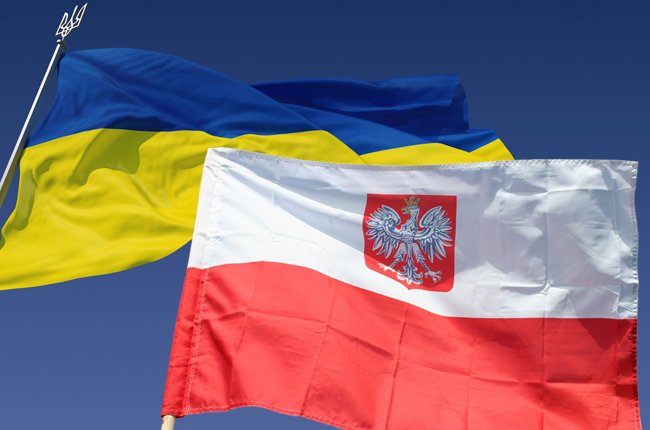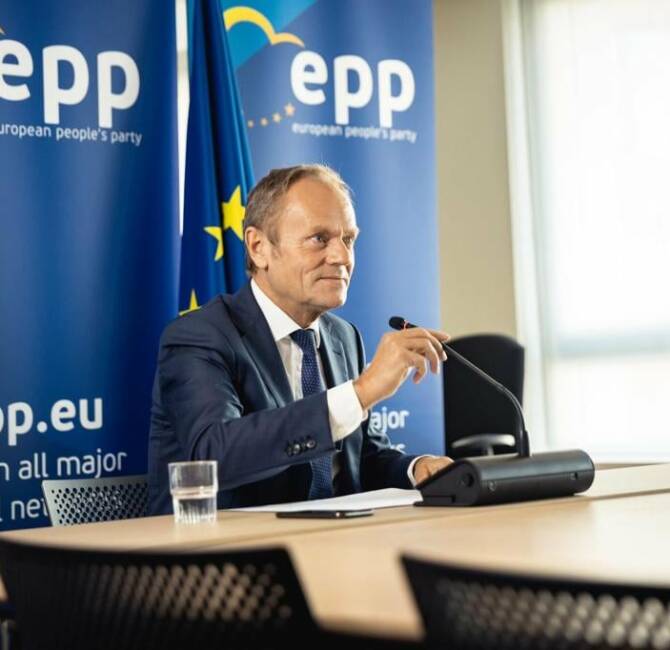By Olivier Bault
Poland – “You have lied to the Poles”, accused in last June the leader of the nationalist party Ruch Narodowy (National Movement) Robert Winnicki during a debate at the Parliament about the social policy of the government. “Concerning a key issue of our future, [this policy] is breaking the promises thanks to which you have won the elections in 2015”, did then the nationalist leader reproach to the deputies of the PiS and raised attention on a process of replacement of the population. While the PiS had promised to the Poles not to engage the country into a mass immigration process by accepting the 7.000 asylum seekers to be “relocated” that the precedent government had accepted to take charge of under the pressure of the EU, its voivodes (equivalent of the French prefects) have delivered residence permits “to hundreds of thousands of Ukrainians and dozens of thousands of Asians” during the past two years. Looking for manpower in order to meet the needs of a booming economy, and while the million of Poles who emigrated after Poland’s accession to the EU are quite slow to come back home, the government of the ex-banker Mateusz Morawiecki is more and more calling on immigration. And as the Ukrainians are no longer sufficient, one turns towards Central Asia and South-Eastern Asia: Azerbaijan, Uzbekistan, India, Nepal, Bangladesh, Pakistan and now the Philippines.
The Polish Labour Ministry wants Filipino workers to come
At the end of July, Stanisław Szwed, Secretary of State in the Ministry of Family, Labour and Social Policy, indeed announced for September an agreement with the government in Manila for [Filipino] workers to come to Poland. The change is already to be seen in the Polish capital Warsaw. These are not only Ukrainians and Belorussians any more that one meets in a lot of shops or that one hears speaking their language on the construction sites, but also very numerous young men obviously coming from India or neighbouring countries who wander on the streets and one sees more and more often foreign women wearing an Islamic headscarf. The food home delivery service Uber Eats that works for Warsaw restaurants is furthermore totally dominated by Indians.
Like in France – even if the proportions are quite different – one’s own eyes put in doubt the official statistics that are still modest though they show indeed a strong increase of the Asian immigration, and one is so far as to wonder whether the PiS – for meeting the needs of the Polish employers, without telling it and without having organised any debate before taking its decision – is not about to engage Poland on the same way like the Western European countries during the post-war decades. It is surely exaggerated to speak – like the nationalist MP Robert Winnicki does – about replacement of the population in Poland, but it is now that a public debate should take place and not when the point of no return will have been reached! All the more as to resort to foreign manpower does restrain the increase of the salaries and delays the return of the Polish emigrants.
The Ukrainian immigration is not sufficient any more to meet the needs of the Polish employers
Among the foreign workers contributing to the Polish social security (ZUS), there were at the end of June more than 380.000 Ukrainians, more than 28.000 Belorussians, more than 8.000 Vietnamese, around 7.000 Russians, more than 5.000 Chinese and as many Indians, 3.000 Turks, 2.400 Nepalese, etc. But those figures do cover only a part of the foreigners living in Poland. So in 2017, 7.000 work permits have been delivered to Nepalese, 4.000 to Indians, 2.400 to Bengali and almost 500 to Pakistani. Relying on the data concerning the permits delivered by the voivodes, Robert Winnicki speaks about 20.000 new immigrants coming from Islamic countries since the PiS arrived to power.
And then there are the ones who are counted neither by the ZUS nor by the voivodes. So does the estimation of the number of Ukrainians living in Poland – a country of 38 millions inhabitants – fluctuates between one and two millions. A study of the National Bank of Poland (NBP) reported on 5 billions złotys (around 1,2 billion euros) transferred by Ukrainians from Poland to Ukraine in 2015. For a comparison, during the three first quarters of 2017 only, the transfers already reached 8,6 billions złotys, so one can have an idea of the increase of the number of Ukrainian workers in Poland.
Poland is lacking manpower with an increase of her GDP by 5,1 % and an unemployment rate of 5,9 %
But the problem with the Ukrainians is that they are less and less satisfied with the salaries they are offered in Poland and go further to the West, particularly since the touristic visas for the Schengen area have been abolished for them. All this while the number of unemployed people in Poland sank for the first time under the figure of one million, with a unemployment rate of 5,9% in June (according to the Polish methodology that is less favourable than the one of Eurostat that already reported only 3,8% unemployed people in Poland in May, versus 8,4% for the whole euro zone). During the first quarter of 2018, the increase of the GDP reached 5,1% in an annual rhythm, showing a new acceleration in comparison to the 4,9% of the quarter before. Facing a lack of manpower in some sectors, the government has facilitated the recruiting procedures concerning 280 professions from the 1st July on. That is why – during a discussion on the (pro PiS) television wPolsce.pl –, the leader of the National Movement, Robert Winnicki, asked on 27 July if a very high increase of the GDP was really more important than the long-term preservation of the national cohesion.
This article was originally published in French language on Réinformation.tv. Translated by theVisegrád Post.




